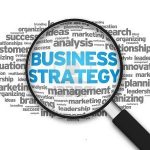Have you started entrepreneurship recently? Surely you think that your product is of high quality and that for that reason alone it should sell well. It’s a mistake. Without a business strategy, your business may be successful initially, but it will have a hard time growing and even continuing. No fear: we are going to solve it with a few phases.
Learn to design your own business strategy
If you have a clothing store in a very commercial street, nobody enters and nobody stands in your window, you have a problem and, probably, it derives from your commercial strategy. In the digital world, problems have different origins and solutions, but the concepts are very similar.
1. Ask yourself: how would my clients like my company to be?
As entrepreneurs, we tend to think about creating the company that we like or that we think our clients like, however, the starting point must be the opposite: what do your clients need? How can you help them?
2. Set your business goals and objectives
You will have to set your business goals in the short, medium, and long term. In other words, you need to know where you want your company to go in a month, a year, or five.
Your objective can be qualitative (make your company more visible) and / or qualitative (increase sales).
Once you set your objectives, you will have to establish the goals to achieve to reach that objective, that is, the milestones that will have to be accomplished. For example, if you want to have 100 new clients by the end of the year, by the middle of the year you will have to have reached approximately 50%. Force yourself to work with clear sales KPIs, billing forecasts that you should monitor, if possible, daily or weekly.
3. Choose your business strategy
There are different types of strategies that you can use in your startup. We detail the 4 most used:
a) By product
It consists of adding innovative features to your products or services, increasing functions, creating complementary products, or creating “premium” products, for example. To design an effective product strategy you must take into account:
- Who is your product?
- What innovation does it bring compared to what already exists on the market?
- The essential objective is that the product is identifiable by its brand.
b) By price
The price of your product is a basic factor. It may be that at first, you want to sell at a lower price to attract customers, but do not forget that customers associate the value and quality of the product with the price. Among the commercial strategies based on the price we can highlight three:
- Low price. It is used when it comes to the launch of a new product, when the product is going to disappear or when there is a very aggressive competition that grows fast.
- Average price. It is the price of the products that are the same or similar to yours. It is used when there is a lot of competition and a lot of users.
- High price. In this case, the product must provide a value or benefits that other similar products do not provide.
c) For communication
It involves focusing on the strategy to publicize your product and includes elements such as advertising or marketing. Actions such as:
- Advertising on radio or television. They seem outdated, but they are still used for their ability to reach large numbers of people.
- Brochures. They are used mainly in the case of local businesses.
- Social networks. They give access to a large number of potential customers and have the power to make a brand go viral.
- Sponsorship of events. You will have to choose the type of event you want to sponsor and be very clear about the objective you want to achieve.
- Email marketing. It is not about sending emails in bulk, but about sending them to people who are really interested in your products or services.
d) For distribution
In this strategy, you will have to ask yourself: where are your customers? Based on the answer to this question, you can choose the best distribution channel for your product or service:
- Physical store.
- Online store.
- Marketplace (platform in which sellers and buyers interact to make a transaction).
5. Execute the strategy
Once you’ve chosen the right business strategy for your business, it’s time to execute it.
In both planning and execution, the advice of entrepreneurs or a business accelerator such as Startup Bootcamp, Berriup, or Seedrocket can help you. They will provide you with mentoring and other tools to validate your business strategy and improve it.
5. Measure the results, as always and almost more important than ever: KPI
Have you achieved the results that you had proposed? The measurement of results will help you to know if your commercial strategy is correct or should include improvements. You can measure the percentage increase in sales revenue or the number of new customers.

